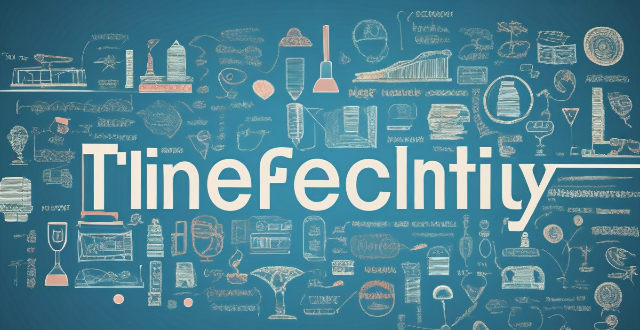Time Morning

Which one do you choose between morning running and night running? It will teach you to choose the one that suits you and stop tangled

What is the best time to exercise for better sleep ?
This article discusses the best time to exercise for better sleep. Regular physical activity is known to improve sleep quality, but the timing of your workout can significantly impact how well you rest at night. The ideal time to exercise is in the morning or early afternoon, as these times allow for ample cooling down and winding down periods before bed. However, individual preferences may vary, and consistency is key; finding a time that works for you and sticking to it will have the most significant impact on your sleep.

Is there an optimal time of day for exercising and why ?
Is there an optimal time of day for exercising? The science behind exercise timing suggests that certain times may be more effective than others due to factors such as circadian rhythms, muscle strength and endurance, cardiovascular health, and weight loss. However, individual preferences and practical considerations should also be taken into account when choosing a time of day to exercise. It is important to find a time that works best for you and stick to a regular exercise routine.

Does the timing of exercise (morning vs. evening) affect its impact on mental health ?
The timing of exercise can have a significant impact on its effects on mental health. Morning exercise boosts mood, energy, and productivity, while evening exercise reduces stress and promotes relaxation. However, morning exercise may be difficult to stick to for some people and can cause fatigue later in the day. Evening exercise may interfere with sleep and be less consistent due to unforeseen events. Ultimately, the best time to exercise depends on individual preferences and lifestyle factors.

Is it better to do aerobic exercise in the morning or evening ?
The best time to do aerobic exercise depends on your personal preferences, schedule, and individual needs. Morning exercise can boost metabolism, improve mental clarity, and increase energy levels, but it may also be challenging to wake up early enough and could lead to lower performance and joint stiffness. Evening exercise can reduce stress, improve flexibility, and promote relaxation, but it may interfere with sleep, have time constraints, and cause fatigue. It's essential to listen to your body and choose a time that works best for you while maintaining consistency in your fitness routine.

How can I speed up my morning beauty routine without sacrificing quality ?
To speed up your morning beauty routine without sacrificing quality, focus on preparation, efficient organization, and smart product choices. Streamline your routine by removing non-essential steps, use multitasking products, and invest in quick drying tools. Simplify your makeup routine, stick to a natural look, and concentrate on key areas. Keep your beauty items organized and easily accessible, shorten your skincare routine, and master quick hairstyles. Prepare accessories and meals in advance, and maintain regular maintenance for hair and nails.

How can I make a quick and healthy breakfast in the morning ?
The text provides tips on how to make a quick and healthy breakfast, emphasizing the importance of planning ahead, keeping it simple, using convenience foods wisely, not forgetting protein, and drinking plenty of water. It also offers examples of quick and healthy breakfast options such as overnight oats, Greek yogurt with berries, whole grain toast with avocado, egg, and tomato, and smoothie bowls with frozen fruit, spinach, and almond milk. The text suggests incorporating protein into breakfast by adding eggs, Greek yogurt, cottage cheese, nuts, or seeds to the meal. It also recommends staying hydrated by drinking a glass of water before breakfast and incorporating water-rich fruits like melon or cucumber into the meal.

Is there a specific time of day that is best for studying according to research ?
The text discusses the best time of day for studying based on research. It suggests that individual differences, environmental factors, task difficulty, and study habits all play a role in determining the ideal study time. Factors such as circadian rhythms, personal preferences, noise levels, lighting conditions, complexity of tasks, regular breaks, and time management should be considered when choosing a study schedule. The text emphasizes that there is no definitive answer and encourages readers to find what works best for them.

What are some healthy and quick breakfast options that can be prepared ahead of time ?
Overnight oats, smoothie bags, muffin tin egg cups, granola bars, yogurt parfaits, and baked sweet potatoes are healthy breakfast options that can be prepared ahead of time. These meal-prepped breakfasts offer benefits such as convenience, versatility, nutrient density, and customizability based on personal preferences. Tips for successful meal prep include planning ahead, batch cooking, proper storage, and staying organized. Incorporating these options into your routine ensures a healthy and satisfying start to the day while saving time in the mornings.

What is the best time of day to practice yoga poses ?
Yoga offers numerous benefits for both the body and mind. The best time of day to practice yoga poses varies from person to person, depending on individual schedules, preferences, and needs. Morning sessions can kickstart metabolism and improve mental clarity, midday practices can relieve stress and rejuvenate the body, while evening yoga can help relax and prepare for sleep. Consistency is key in any yoga practice, so find what works best for you and maintain regularity for optimal results.

How do celebrities spend their leisure time ?
Celebrities enjoy leisure activities such as traveling, pursuing hobbies, spending time with family and friends, and engaging in philanthropy. They explore new cultures, take luxury vacations, participate in humanitarian trips, practice artistic pursuits, stay fit through sports, prioritize family gatherings and friendships, and give back to society through fundraising events and advocacy work.

Is it better to pay off student loans quickly or over time ?
When it comes to paying off student loans, there are two main strategies: paying them off quickly or spreading out the payments over time. Both approaches have their advantages and disadvantages, and the best choice depends on your individual financial situation and goals. In this article, we will explore the pros and cons of each strategy to help you make an informed decision.

How can families make time for both sports and quality family time ?
In today's fast-paced world, finding a balance between work, personal interests, and family time can be challenging. For families with members who are passionate about sports, integrating quality family time and sports activities requires careful planning and a commitment to making the most of every moment together. Here's how families can make time for both sports and quality family time: ### **Prioritize and Plan** #### _Set Clear Priorities_ - Discuss as a family what each member values most in terms of sports and family time. - Agree on a set of priorities that everyone can commit to. #### _Create a Shared Calendar_ - Use a family calendar to schedule sports practices, games, and family activities. - Make sure everyone has access to the calendar and updates it regularly. ### **Integrate Sports into Family Time** #### _Attend Sports Events Together_ - Make attending sports games or practices a family outing. - Cheer on the athlete together, making it a shared experience. #### _Play Sports as a Family_ - Engage in sports activities that everyone enjoys, such as bike rides, hikes, or backyard games. - Encourage non-athletic family members to participate in ways that suit their interests and abilities. ### **Quality Over Quantity** #### _Make Every Moment Count_ - Even short periods of time can be meaningful if everyone is fully engaged. - Turn off distractions like phones and TVs to focus on each other. #### _Regular Family Meetings_ - Hold regular family meetings to discuss schedules, concerns, and plans. - Use this time to reinforce the importance of both sports and family time. ### **Flexibility and Adaptability** #### _Be Open to Change_ - Recognize that unforeseen events may require adjustments to plans. - Maintain a flexible attitude to accommodate changes without stress. #### _Communicate Openly_ - Encourage open communication about feelings and scheduling conflicts. - Address any issues promptly to avoid resentment or burnout. ### **Support and Encouragement** #### _Encourage Each Other_ - Support family members in their sports endeavors and recognize their efforts. - Acknowledge the sacrifices made by non-participating family members. #### _Celebrate Achievements Together_ - Celebrate sports achievements as a family, no matter how big or small. - Create traditions around these celebrations to strengthen family bonds. ### **Conclusion** By prioritizing, planning, integrating sports into family time, focusing on quality interactions, being flexible, and providing support, families can successfully make time for both sports and quality family time. It's all about finding the right balance that works for your unique family dynamics and embracing the enriching experiences that both realms offer.

How can I save time and avoid long lines at the airport ?
The text provides a comprehensive guide on how to save time and avoid long lines at the airport. It suggests checking in online, choosing off-peak travel times, signing up for loyalty programs, using automated check-in kiosks, packing smart, arriving early but not too early, being prepared for security screening, utilizing airport services, staying informed, and considering alternative airports. These tips aim to help travelers navigate through the airport efficiently and make their travel experience smoother and more enjoyable.

How can I avoid processed foods in my breakfast while still saving time ?
Avoiding processed foods at breakfast can be achieved by planning ahead, simplifying options, getting creative with whole foods, and using technology. Planning ahead involves meal prep and shopping smart for whole foods. Simplifying options includes going basic with fruits and nuts or using minimally processed convenience foods wisely. Getting creative with whole foods means experimenting with flavors and embracing variety. Using technology involves apps and online resources for quick and healthy breakfast ideas, as well as kitchen gadgets to save time. By implementing these strategies, one can enjoy a healthy and satisfying breakfast without sacrificing convenience or taste.

What are some tips for managing my time effectively while studying ?
Managing time effectively is crucial for academic success. Create a study schedule by identifying goals, prioritizing tasks, and allocating time. Eliminate distractions by turning off notifications, finding a quiet place, and using focus techniques. Take regular breaks, engage in physical activity, and avoid multitasking. Use tools like time management apps, study groups, and online resources. Stay motivated by setting achievable goals, celebrating accomplishments, and seeking support.

How can I incorporate more fiber into my breakfast without it being time-consuming to prepare ?
Fiber is essential for a healthy diet, aiding in digestion and keeping you fuller for longer periods. Here are some quick and easy ways to incorporate more fiber into your breakfast: 1\. High-fiber cereals like Bran Flakes or Kashi GoLean can be paired with low-fat milk or almond milk. 2\. Swap out white bread for whole grain varieties and top them with natural peanut butter or avocado for an extra fiber boost. 3\. Add fruits like raspberries, blackberries, apples, and pears to your breakfast for a delicious way to start your day and an excellent source of fiber. 4\. Sprinkle chia seeds, flaxseeds, or chopped nuts onto your yogurt, oatmeal, or cereal for a rich source of fiber and healthy fats. 5\. Incorporate legumes like lentils and chickpeas into your breakfast by adding them to your breakfast salad or making a quick hummus to spread on your whole grain toast. 6\. Add vegetables like spinach, mushrooms, tomatoes, and avocados to your breakfast omelet or scramble for a tasty way to get more fiber.

Are there any scholarships available for part-time students ?
Part-time students face unique challenges when it comes to financing their education, but there are still scholarships available for them. Need-based scholarships are awarded based on financial need, while merit-based scholarships are awarded based on academic achievement or other criteria. Employer tuition assistance programs may also be an option for part-time students. Tips for applying for scholarships as a part-time student include starting early, being prepared, and following instructions carefully.

How can I prioritize tasks effectively to manage my time better ?
Effective time management involves prioritizing tasks to improve productivity and reduce stress. The process begins with identifying goals, followed by using the Eisenhower Matrix to categorize tasks based on urgency and importance. Breaking down large tasks, maintaining a to-do list, and setting realistic deadlines also aid in efficient task prioritization. These strategies help manage time effectively and achieve success in personal and professional life.

What are some time-saving tips for preparing home-cooked meals ?
Time-saving tips for preparing home-cooked meals include planning meals in advance, using a slow cooker or pressure cooker, prepping ingredients ahead of time, cooking once and eating twice, using convenience foods wisely, cleaning as you go, and simplifying your menu. These strategies can help save time and reduce stress during meal prep while still allowing you to enjoy delicious homemade dishes.

What are some effective time management techniques for students ?
Effective time management techniques for students include prioritizing tasks, setting goals, creating a schedule, utilizing time management tools, minimizing distractions, and taking breaks. These strategies help students focus on important tasks, allocate time efficiently, avoid procrastination, and maintain a healthy work-life balance.

How often do you run limited-time promotions ?
Running limited-time promotions can be an effective strategy for businesses to increase sales, acquire new customers, and manage inventory. The frequency of these promotions depends on various factors such as business goals, target audience, and product/service offerings. Limited-time promotions offer benefits such as increased sales through urgency and discounts, customer acquisition by attracting new customers and rewarding loyalty, and inventory management by clearing excess inventory and promoting seasonal products. Best practices for limited-time promotions include planning and timing, marketing and promotion, and tracking and analysis. By following these practices, businesses can maximize the benefits of limited-time promotions and achieve their desired outcomes.

Can speed reading help me save time when studying for exams ?
Speed reading can save time when studying for exams by increasing efficiency, improving recall, managing time better, and reducing stress. However, it may compromise comprehension, not be suitable for all text types, require skill development time, and lead to overconfidence. To effectively use speed reading, start early, combine techniques, take breaks, test comprehension, and customize your approach.